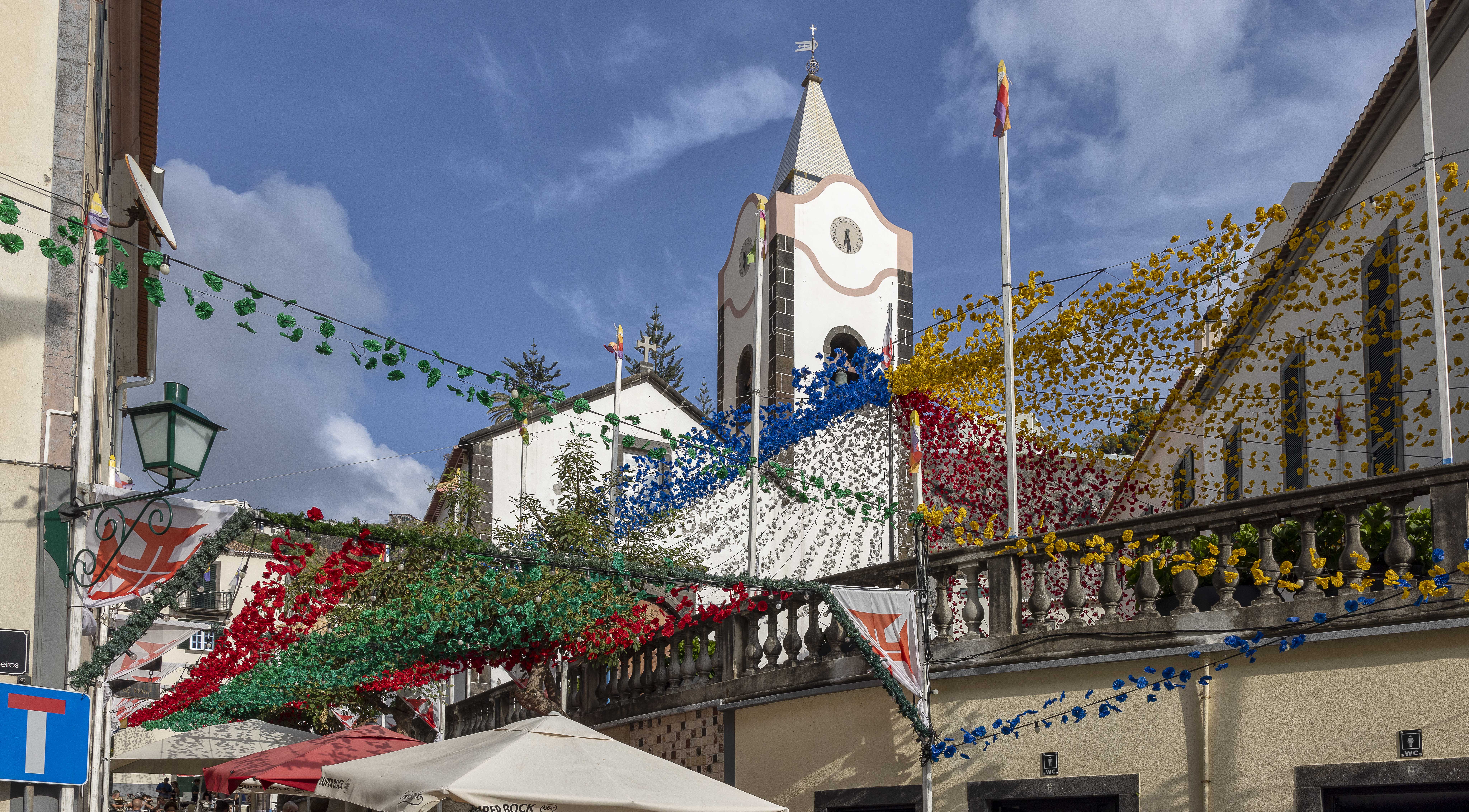A vibrant and cosmopolitan atmosphere defines Ponta do Sol, a town where many worlds come together
Arriving in Ponta do Sol on a Friday evening is a mixture of impressions. If, on the one hand, in the heart of the majestic town, you can hear the echo of the sea waves in an atmosphere of tranquillity, on the other hand, as you walk through the centre, you'll find Rua Dr. João Augusto Teixeira, with its terraces full of people eager to celebrate the long-awaited arrival of the weekend.
On this street, you have to wait until you can get a table in any of the establishments, which are packed to the rafters. During this wait, which is expected to be long, but quicker than you think due to the acknowledged efficiency of the service on the island, you can see many Madeiran families socialising, groups of young people sharing a bottle of wine or enjoying a poncha, with tapas or other snacks in the mix.
But in this lively human landscape we find foreigners, many foreigners of various ages and nationalities who have fallen in love with the picturesque village they now call home, in a place where even the sun insists on staying longer.
The confluence of English and Portuguese, the languages that most people hear, gives a cosmopolitan touch to the smallest municipality in the Autonomous Region of Madeira (43.3 km²), which was the third to be populated, after Machico and Funchal.
As night falls gracefully, the terraces gradually begin to empty out. Most of the customers are getting ready to walk the few steps to the John dos Passos Cultural Centre to watch the film "Gilberto Gil - O poder da Música" (Gilberto Gil - The Power of Music), as part of "Encontros do Cinema" (Cinema Encounters), one of the activities of the Travessuras Culturais Festival.
The event, which has already had seven editions, is characterised by its provocative, multidisciplinary and interactive nature, which at its inception aims to create a synergy between the region's creative force and artists from abroad, to "bring the world to the island and the island to the world".
In fact, in this town we can experience several worlds within a single world. Proof of this are the echoes that can be heard from the top of the cliff, where the Estalagem da Ponta do Sol is built, the 'escape hotel', which is the trendiest place of the moment, where digital nomads and the local community get together on Fridays for the usual "Purple Fridays", with the premise of celebrating the natural beauty of the municipality combined with a networking concept, which excels in cocktails, electronic music and a magnificent landscape as a backdrop.
But Ponta do Sol is not only home to this spirit of Soirée and bohemia, as it is currently home to around 8,200 people. It's also worth mentioning one of the most striking historical landmarks in the town centre: the Church of Nossa Senhora da Luz, one of the most emblematic monuments on the west coast of the island of Madeira. This temple, built at the end of the 15th century, has an imposing façade, which was rebuilt in 1708 to enlarge the body of the church.
This unmissable monument has extravagant features typical of Manueline and Neo-Mannerist religious architecture. Its beauty undoubtedly illuminates the centre of the town, which thrives on this perfect marriage between classic and modern, which is the masterstroke that makes this place so special and seductive for Madeirans and foreigners alike.
Finally, to get a broader perspective on this charming municipality, there's nothing like going to the viewpoint overlooking Ponta do Sol and contemplating its breath-taking scenery.
Here, nature invites you to sit on the concrete benches, enjoy the surroundings and calmly observe the contrast between the mountains that embrace the town and the sea in the background.
Ponta do Sol was founded in 1501 by royal charter of King Manuel I and was the birthplace of some of Madeira's most important families. The good climate, hand in hand with the fertile soil, quickly brought abundance and prosperity to the municipality, making it an ex-libris for the production of sugar cane, once known as 'white gold', and bananas. Perhaps that is why there is a sweet emotion that accompanies a visit to this town, which offers stunning sunsets in shades of orange and pink.
In truth, the portrait of the municipality has changed a lot in recent years, especially with the entry of digital nomads into the community, which has shaken up the social, cultural and economic panorama. However, one of the distinguishing features of Ponta do Sol since its inception was precisely its cultural dynamism, since at the turn of the 19th to the 20th century five newspapers were published in this town alone.














